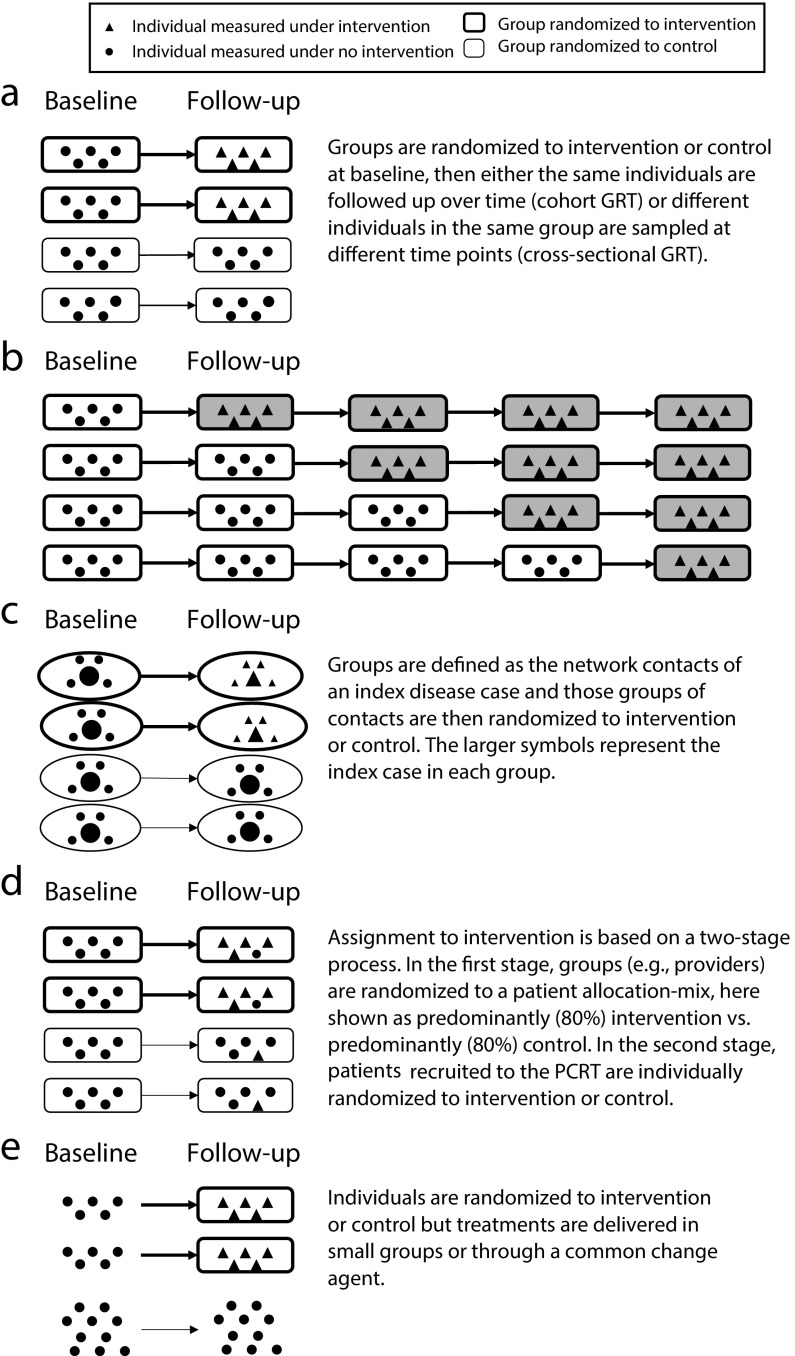FIGURE 1—
Pictorial Representation of Designs for (a) Parallel-Arm GRT, (b) Stepped-Wedge GRT, (c) Network-Randomized GRT, (d) Pseudocluster Randomized Trial (PCRT), and (e) Individually Randomized Group-Treatment (IRGT) Trial
Note. GRT = group-randomized trial. Each pictorial representation is an example of the specific design in which baseline measurements are taken. Other versions of each design exist. All examples show 5 individuals per group. The stepped-wedge GRT is a 1-directional crossover GRT in which time is divided into intervals and all groups eventually receive the intervention, indicated by the shading of the boxes. The design is an example of a “complete design,” that is, every group is measured at every time point. Like parallel-arm GRTs, stepped-wedge GRTs can be either cross-sectional or cohort. In the pseudocluster randomized trial, a group randomized to “intervention” is a group that contains a larger proportion of group members receiving the intervention than does a group randomized to “control”.

